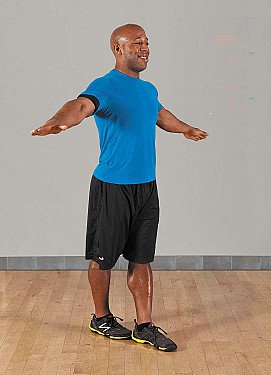[ad_1]
Adding balance exercises to a busy schedule can seem like one chore too many. How are you supposed to go on an extra 30 minute diet when you already exercise daily, work and run errands? The answer is to do one small balance workout at a time. “Just a minute of balance exercise here or there has a cumulative effect. As your balance improves, it becomes easier to complete daily tasks,” says Kristina Dunlea, a physical therapist at Brigham and Women’s Hospital, affiliated with Harvard.
We need good balance to perform vertical activities safely, such as walking, getting up and down from a chair or bed, climbing stairs, or reaching for a dish in a cupboard. Unfortunately, balance deteriorates over time, increasing the risk of falls – a leading cause of injury and disability after age 65.
Find the time
Since you only need a minute for a balance exercise, Dunlea recommends fitting it into free time that’s already built into your day.
“For many people, it’s when they’re standing and waiting for the coffee to be ready or brushing their teeth. Or it could be during TV time: consider commercials as a signal to you get up and do a balancing exercise,” she suggests.
These opportunities also come with equipment to keep you safe if you become unsteady during a balancing exercise, such as a counter or desk to hold on to or a chair to lean on.
Balance Exercise Ideas
A sturdy counter or chair works well for several effective balance exercises.
For example, a sturdy chair is a good place for a sit-to-stand exercise: move from a seated to a standing position with your arms crossed, then return to a seated position and repeat the process. Dunlea recommends doing this exercise five to ten times in a row. “It strengthens your leg and abdominal muscles and trains you to shift the main weight of your body onto your feet, your base of support,” she explains.
A counter works well for doing a minute of heel raises, standing or tandem walking, or standing on one leg (see “3 Balance Exercises to Try at Home”). “Standing on one leg is especially helpful for tasks that require shifting your weight and balance onto one leg for a moment, such as climbing stairs or stepping onto a sidewalk,” says Dunlea.
But don’t continue a balancing exercise if it’s so difficult that you might fall. And if you currently have balance issues, it’s best to consult a physical therapist before trying these moves for yourself. For more information, see the Harvard Health Special Report. Better balance.
3 balance exercises to try at home
Standing tandem

Stand with your arms at your sides. Place your left foot directly in front of your right foot, heel to toe, and squeeze your inner thighs together. Raise your arms out to the sides to help you balance. Hold the position for up to 30 seconds. Return to the starting position, then repeat with your right foot forward.
The heel rises

Stand with your arms at your sides. Lift your heels, shifting your weight toward the balls of your feet. Try to balance evenly without allowing your ankles to roll inward or outward. Socket. Lower your heels to the floor, while maintaining good posture. Repeat 10 times.
One leg position

Stand with your arms at your sides. Bend your right knee, lift that foot several inches off the ground, and balance on your left leg. Hold the position for up to 30 seconds. Return to the starting position, then repeat the process while balancing on your right leg.
Exercise Photos by Michael Carroll
[ad_2]
Source link
